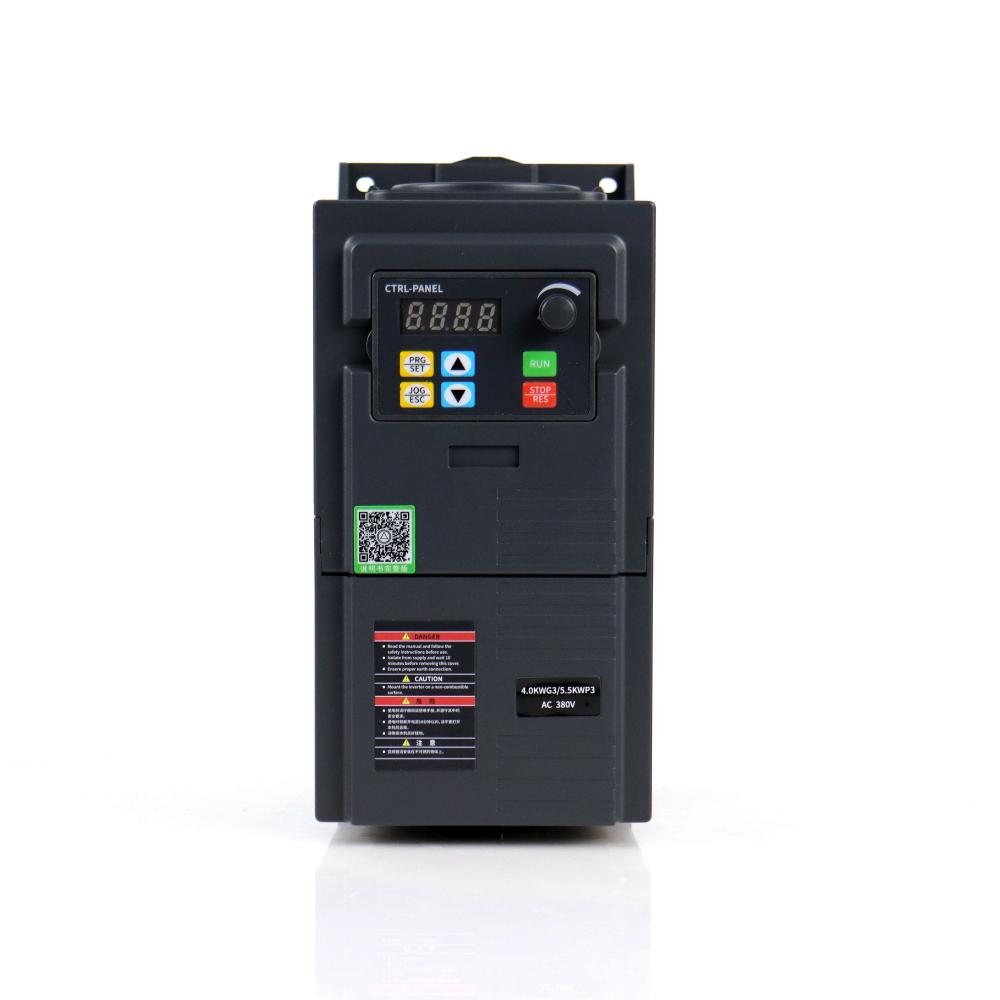A vector inverter, also known as a variable frequency drive (VFD) or adjustable speed drive (ASD), is an advanced power electronic device used to convert direct current (DC) power into alternating current (AC) power. It operates by employing complex control algorithms and sophisticated power electronics to regulate the frequency, voltage, and phase of the AC output waveform.
Power electronics, DC to AC conversion, Frequency control, Voltage regulation, Phase synchronization WuXi Spread Electrical Co.,LTD , https://www.vfdspread.com
The fundraising will be invested in the Wuhu Optoelectronic Industrialization (Phase II) project of Anhui Sanan Optoelectronics Co., Ltd. and the LED Application Product Industrialization Project of Anhui Sanan Optoelectronics Co., Ltd. The total investment of the two projects is 9.125 billion yuan.
This is the third refinancing of Sanan Optoelectronics since its listing. On March 16, 2010, Sanan Optoelectronics issued a private placement plan, plans to issue no more than 53 million shares (including 53 million shares), and no less than 20 million shares, the issue price is not less than 55.77 yuan / share, raising funds The net amount will not exceed 2.98 billion yuan, and will be used for the company's wholly-owned subsidiary Anhui Sanan Optoelectronics Co., Ltd. to implement the Wuhu Optoelectronics Industrialization (Phase I) project. The total investment of the project is 6.662 billion yuan.
In February 2009, Sanan Optoelectronics announced that it will issue non-public offerings of no more than 50 million shares to no more than 10 institutional investors, and raise funds of no more than 800 million yuan for the LED chip industrialization project of Tianjin Sanan Optoelectronics. The additional price is not less than 12.44 yuan / share.
Fundraising projects are questioned
Regarding the reason for launching this additional issuance, Sanan Optoelectronics stated in the announcement that “the industry is developing rapidly, and the company needs to expand production to expand market share and reduce costsâ€.
Sanan Optoelectronics completed large-scale refinancing three times with high density, causing controversy in the industry.
Ma Fengtao, an analyst at Southwest Securities, pointed out that Sanan Optoelectronics' capacity expansion after the listing was quite radical. The company's original production capacity in Xiamen headquarters is 500,000 epitaxial wafers and 18 billion chips. The three-round refinancing investment in Tianjin, Wuhu Phase I, and Wuhu Phase II has a total annual production capacity of 7.275 million. Chips, 272 billion chips.
According to the special report on the deposit and use of funds raised by Sanan Optoelectronics, the Tianjin base of the fundraising project in 2009 has been put into production, but it has not reached production, with a revenue of 158 million yuan, a net profit of 40.1 million yuan and a company estimate of 1.1 billion in the initial issuance plan. The difference between yuan income and 220 million yuan is quite large. In 2010, the fundraising project in Wuhu Phase I still has 26% of the funds unused, and the company said it will gradually put into production in 2011.
In 2010, Sanan Optoelectronics' 420 million yuan net profit, the government subsidy included in the current statement reached 253 million yuan, mainly the subsidy of the Wuhu municipal government's purchase of LED equipment MOCVD machine. Since 2011, the company has received a total of 788 million yuan of government subsidies.
At the same time as the company frequently refinanced, it received huge government subsidies, but the fundraising projects that are gradually put into production have not yet brought the expected results to the company's performance. 
Vector inverters are widely used in various industries and applications due to their ability to provide precise control over the speed and torque of AC motors. By adjusting the frequency and voltage of the AC output, vector inverters can effectively regulate the motor's rotational speed, enabling smooth acceleration, deceleration, and precise positioning. This makes them essential in applications where precise control over motor speed and torque is required, such as industrial machinery, robotics, HVAC systems, and electric vehicles.
One of the key features of vector inverters is their ability to provide vector control, also known as field-oriented control (FOC). Vector control allows for independent control of the motor's magnetizing flux and torque, resulting in improved motor performance and efficiency. By accurately adjusting the motor's magnetic field and torque components, vector inverters can minimize energy losses, reduce motor heating, and enhance overall system efficiency.
In addition to motor control, vector inverters offer a range of advanced features and protection mechanisms. They typically include built-in functions for fault detection, overcurrent protection, overvoltage protection, and thermal protection, ensuring safe and reliable operation of the system. Furthermore, many vector inverters support communication protocols such as Modbus, Ethernet, and Profibus, facilitating integration with supervisory control systems and enabling remote monitoring and control.
Vector inverters are also extensively used in renewable energy systems, such as wind turbines and solar photovoltaic (PV) systems. They play a crucial role in converting the variable DC power generated by renewable sources into stable and grid-compatible AC power. By efficiently tracking and regulating the power output, vector inverters enable optimal power harvesting from renewable sources while ensuring grid stability and compliance with grid codes.
Overall, vector inverters are versatile devices that provide precise and efficient control over AC motors, making them indispensable in a wide range of industrial, commercial, and residential applications. With their advanced features, protective mechanisms, and compatibility with renewable energy systems, vector inverters contribute to enhanced energy efficiency, improved system performance, and sustainable energy utilization.

[High-tech LED News] Sanan Optoelectronics announced a new round of refinancing plan in the latest announcement on April 13. The company plans to raise funds of not more than 8 billion yuan by means of public issuance. The number of additional shares will not exceed 210 million shares, but the issue price has not yet been finalized.